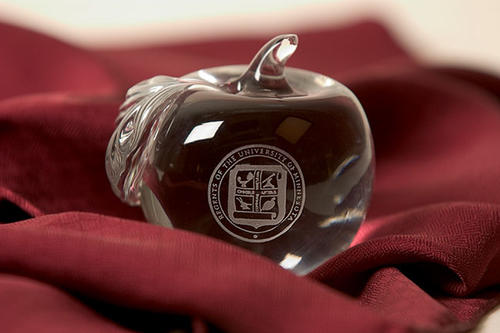
At its meeting next week, the University’s Board of Regents will explore the makeup of the Twin Cities undergraduate student body, with specific attention to success metrics outlined in the Board’s Progress Card and in the five-year enrollment plan.
In his annual report, Vice Provost and Dean of Undergraduate Education Robert McMaster will highlight three areas of achievement:
Profile of new students
- Highest number of applications (more than 49,000) and students admitted (nearly 22,000), with the largest number of enrollments (5,880) since 1970.
- Among students of color, record applications (nearly 15,700), students admitted (nearly 5,200) and enrolled (1,310 — 22.3 percent of the class, up from 19.5 percent in 2012).
- Average ACT score of 28.3, exceeding the Progress Card measure of 28.
- Continued commitment to Minnesota students, who make up nearly 65 percent of the class, while modestly growing the number of students from outside Minnesota, Wisconsin and the Dakotas.
- Largest transfer class — 2,300 students — since 2009.
Retention and graduation rates
- 93.2 percent first-year retention rate overall, marking a third straight increase, with the rate for students of color (93.6 percent) reaching its highest level ever. Retaining students from year one to year two improves the likelihood of timely graduation, which saves students costs as well as allows quicker entry into a career.
- 65.2 percent four-year graduation rate, which ranks fifth among Big Ten peers and exceeds the Progress Card measure.
Student success initiatives
- 18 academic advisors hired since December 2015, while increasing professional development training for all advisors to further their ability to help students stay on track for timely graduation.
- Programs like President’s Emerging Scholars, which currently enrolls more than 1,800 students with potential for success, providing scholarships, mentoring and support.
“As these highlights show, the University continues to be a sought after education destination, providing a world class education that is affordable and accessible,” said McMaster. “We’re also pleased that 43 percent of our students graduate with no debt and for those who do, we’ve been able to decrease the average debt by more than $1,000 during President Eric Kaler’s tenure.”
In addition to this update, McMaster will discuss how and why standardized test information is used during the U’s holistic admissions review. This presentation is a follow up to the October 2016 Board Work Session on admissions principles and holistic review.
An accountable University
While educating students, conducting research and engaging with communities across Minnesota, the U of M is accountable to the state’s citizens. This is shown in a variety of ways, including through the annual University Plan, Performance, and Accountability Report, which will be discussed next week by the Academic & Student Affairs Committee and full Board; the University Operating Budget; and the University Capital Budget.
Additionally, the University works to meet and exceed performance goals set by the Minnesota Legislature. In fiscal year 2016, the University exceeded goals in all five areas, releasing roughly $28 million in performance-based state funding that was held contingent on meeting at least three of the five goals. The results:
- Improving four-year graduation rates for students of color system-wide by five percent;
- Increasing the total number of undergraduate Science, Technology, Engineering and Math (STEM) degrees system-wide;
- Improving the overall four-year undergraduate graduation rate across the U of M system by over three percent
- Reallocating $15.4 million of administrative costs; and
- Increasing licensing disclosures.
With approval by the Regents, a report on these goals will be submitted to the Commissioner of Management and Budget later this month.
The Board will also:
Review the institution’s research enterprise. Vice President for Research Brian Herman, in his final report to the Board, will outline continued growth in overall research awards and expenditures, despite the challenging funding environment, technology commercialization efforts and the progress of strategies to diversify research funding.
Discuss system-wide strategic planning efforts. With the completion of listening sessions at each campus this fall, Regents will be asked to provide input regarding emerging themes in these sessions and the system’s future.
Affirm the future location of the recreation sports bubble and fields, which will be displaced by the Gopher Athletics Track and Field facility. The discussion will focus on the highlights of each site studied and present the Administration’s plan to relocate those facilities to the current site of the Electric Steel Elevators.
Receive an update on the Medical School’s strategic plan. In his report, Medical School Dean and Vice President for Health Sciences Brooks Jackson will highlight research and scholarship accomplishments as well as advances in education, new leaders, and next steps for the clinical enterprise.
Introduce two new University leaders: Brian Burnett, senior vice president for finance and operations and Boyd Kumher, chief compliance officer.
A non-public meeting of the Litigation Review Committee begins at 7:30 a.m. Thursday followed by additional committee meetings throughout the day. Around 4:45 p.m. Thursday, the full Board will convene to take action on items in committee reports.
On Friday morning, after a non-public meeting to discuss labor negotiation strategy, the full Board meeting will convene at 8:45 a.m. The University of Minnesota Police Department will be conducting bag checks in the sixth floor lobby. No flags, banners, signs or similar displays will be permitted, consistent with Board bylaws (Section F, subd. 4).
For more information, visit the Board of Regents website.
- Categories:
- Campus Affairs





